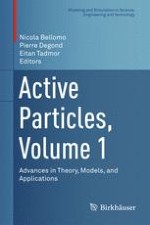2017 | OriginalPaper | Chapter
Sparse Control of Multiagent Systems
Authors : Mattia Bongini, Massimo Fornasier
Published in: Active Particles, Volume 1
Publisher: Springer International Publishing
Activate our intelligent search to find suitable subject content or patents.
Select sections of text to find matching patents with Artificial Intelligence. powered by
Select sections of text to find additional relevant content using AI-assisted search. powered by
